For months and even years, champagne has enjoyed a completely preserved environment, installed in cellars protected from light at a constant temperature and impregnated with a high humidity level. The ideal conditions for it to offer the best of itself. Yes, but not everyone has a cool and welcoming cellar. So how can you store champagne at home without altering its qualities? Explanations on the art of preserving your vintages for as long as possible.
Ideally in the cellar, or to be enjoyed without too much delay.

You don't have a place to store your champagne? The solution is to consume it in the coming months. Indeed, the qualities of champagne, if the storage conditions are not met, will gradually deteriorate under the effect of various external factors such as light and, above all, excessive temperature variations.
The only solution is to place your bottle of champagne lying down at the bottom of your refrigerator, where the temperature is not too cold (ideally 10°). In these conditions, a bottle of champagne can be kept for several months. Be aware that if you leave your bottle of champagne in natural or artificial light, you risk having a wine with a light taste, a defect that leads to unpleasant aromas. A very unpleasant surprise when you are about to serve a fine selection of old champagnes. Note that the green or "dead leaf" colored bottle preserves the champagne better from light than clear glass bottles.
The aging potential of champagnes is not all equal!

As we have seen, champagne is a wine that should ideally be kept in a cellar at a constant temperature of 10°, a high humidity (between 60 and 80%) in a lying or even upright position, unlike a wine, this position does not alter the champagne and protected from light. Vibrations and noise are also important, champagne likes calm. But you should know that not all champagnes are equal when it comes to conservation. Some champagne wines are kept longer than others. Non-vintage Bruts should be consumed rather quickly and do not like aging. Their effervescence and freshness do not last indefinitely in the bottle and their aromas tend to become more complex and turn towards more honeyed notes.
The style of vintage champagnes continues to evolve and their talent can be further developed over time. As for the great vintages of the great Houses, they reveal immense aging potential when kept in good conditions. These vintages and great old vintages are particularly appreciated by champagne lovers who are looking for this particular style that is more akin to tasting a great white wine.
Exceptions to consider
The grape variety also plays an important role in conservation. Thus, champagne containing chardonnay like Blanc de blancs will keep longer. Also note that large formats of champagne like Magnum can offer better conservation conditions. To conclude, know that an opened bottle of champagne must be consumed within 24 hours and that you should never place your champagne in the freezer at the risk of "breaking" its aromas. If you do not have a cellar available and you still want to keep your bottles over time, leave them in their original box and place them in the coolest and most temperate place in the house.




